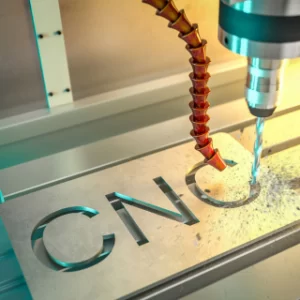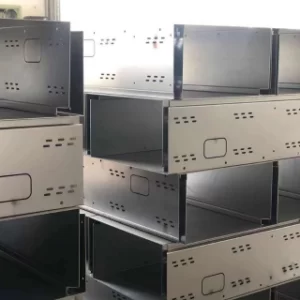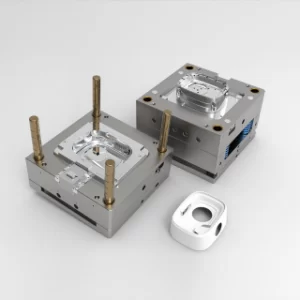Is Axis Milling Machine the Key to Unlocking Design Complexity?
Elevate your manufacturing capabilities with Insight Prototype Co., Ltd's axis milling machines. Experience cutting-edge technology and unmatched precision for your production needs.
Introduction to Axis Milling Machines
1.1 What is Axis Milling?
Axis milling is a precision machining process that involves removing material from a workpiece using a rotating cutter. The term "axis" refers to the number of directions in which the cutting tool can move relative to the workpiece. In simpler terms, it denotes the freedom of movement the machine has to cut into the material. Axis milling machines can move the cutting tool along multiple axes simultaneously, allowing for complex and precise machining operations.
1.2 History and Evolution of Axis Milling Machines
The concept of milling dates back centuries, but the development of multi-axis milling machines is a more recent phenomenon. Early milling machines were limited to three axes of movement – X, Y, and Z. However, advancements in technology and engineering have led to the development of machines with additional axes of movement, such as 4-axis and 5-axis milling machines. These advancements have revolutionized the manufacturing industry, enabling the production of highly intricate and complex parts with unprecedented precision.
1.3 Importance and Applications in Various Industries
Axis milling machines play a crucial role in a wide range of industries, including aerospace, automotive, medical, and electronics. Their ability to produce complex geometries with tight tolerances makes them indispensable for manufacturing components such as turbine blades, engine blocks, medical implants, and electronic housings. Additionally, axis milling machines are instrumental in rapid prototyping and low-volume production, allowing manufacturers to iterate designs quickly and cost-effectively.
Types of Axis Milling Machines
2.1 3-Axis Milling Machines
Limited to three axes of movement: X, Y, and Z.
Suitable for basic machining operations with relatively simple geometries.
Commonly used in industries such as woodworking, mold making, and general machining.
2.2 4-Axis Milling Machines
In addition to the X, Y, and Z axes, these machines feature a rotary axis (usually designated as A or B).
Ideal for machining parts with features that require rotation, such as curved surfaces and holes at non-perpendicular angles.
Widely utilized in aerospace, automotive, and jewelry manufacturing, among other industries.
2.3 5-Axis Milling Machines
Incorporate two additional rotary axes (usually designated as A and C).
Offer unparalleled flexibility and versatility, allowing for machining from multiple angles without repositioning the workpiece.
Essential for producing highly complex parts with intricate geometries and undercuts.
2.4 Key Components and Working Principles
Axis milling machines consist of several key components, including the machine bed, spindle, cutting tool, workholding device, and control system. The machine bed provides a stable platform for mounting the other components and supporting the workpiece. The spindle holds the cutting tool and rotates it at high speeds to remove material from the workpiece. The cutting tool is selected based on the material being machined and the desired geometry of the final part. Workholding devices such as vises, chucks, and fixtures secure the workpiece in place during machining operations. Finally, the control system coordinates the movements of the machine axes and regulates the machining process to achieve the desired results.

Emerging Trends in Multi-Axis Machining
3.1 Introduction to Multi-Axis Machining Beyond 5 Axes
While traditional axis milling machines have been instrumental in precision manufacturing for decades, emerging trends in multi-axis machining are pushing the boundaries of what's possible. Beyond the well-known 3-axis, 4-axis, and 5-axis machines, advancements in technology have led to the development of machines with six or more axes of movement. These machines offer even greater flexibility and precision, opening up new possibilities for complex part manufacturing.
3.2 Advancements in Technology Driving Multi-Axis Machining
The evolution of multi-axis machining is closely linked to advancements in machine tool technology, control systems, and software algorithms. High-performance motors and drives enable faster and more accurate movements, while advanced control systems provide seamless coordination of multiple axes. Furthermore, sophisticated CAD/CAM software packages offer powerful tools for generating optimized toolpaths and simulating machining processes in virtual environments.
3.3 Applications in Aerospace, Automotive, Medical, and Other Industries
Multi-axis machining has found widespread adoption across various industries due to its ability to produce highly complex parts with tight tolerances. In the aerospace sector, multi-axis machines are used to manufacture components such as turbine blades, engine housings, and structural components with intricate geometries. Similarly, in the automotive industry, multi-axis machining is employed for producing engine blocks, transmission components, and suspension parts. In the medical field, multi-axis machines are utilized for manufacturing orthopedic implants, surgical instruments, and prosthetic devices. Beyond these industries, multi-axis machining has applications in areas such as mold making, prototyping, and custom fabrication.
3.4 Challenges and Opportunities in Adopting Multi-Axis Machining
While multi-axis machining offers significant advantages in terms of flexibility and precision, it also presents challenges in terms of programming complexity, machine setup, and tooling requirements. Manufacturers must invest in training and expertise to fully leverage the capabilities of multi-axis machines. Additionally, there may be limitations in terms of part size, material compatibility, and cost-effectiveness. However, for companies willing to overcome these challenges, multi-axis machining presents opportunities for increased productivity, improved quality, and expanded capabilities.
Optimizing Toolpaths for Axis Milling Machines
4.1 Importance of Toolpath Optimization in Axis Milling
In axis milling, the toolpath—the trajectory followed by the cutting tool—is crucial for achieving the desired part geometry, surface finish, and machining efficiency. Optimizing toolpaths can minimize machining time, reduce tool wear, and improve surface quality. By carefully planning toolpaths, manufacturers can maximize the performance of their axis milling machines and achieve better overall productivity.
4.2 Strategies for Efficient Toolpath Generation
Generating efficient toolpaths involves considering factors such as tool geometry, material properties, part geometry, and machine capabilities. Strategies for efficient toolpath generation include minimizing tool retractions and rapid movements, optimizing cutting directions and depths, and avoiding unnecessary tool changes. Additionally, advanced CAM software packages offer features such as adaptive roughing, high-speed machining, and collision detection to further enhance toolpath efficiency.
4.3 Software Tools and Algorithms for Optimizing Toolpaths
Several software tools and algorithms are available for optimizing toolpaths in axis milling machines. These tools use algorithms such as geometric optimization, toolpath smoothing, and collision avoidance to generate efficient and collision-free toolpaths. Furthermore, some CAM software packages offer integrated simulation capabilities, allowing users to visualize and analyze toolpaths before machining. By leveraging these software tools, manufacturers can streamline the programming process and reduce the risk of errors during machining.
4.4 Considerations for Different Materials and Part Geometries
When optimizing toolpaths for axis milling machines, manufacturers must consider the specific characteristics of the material being machined and the geometry of the part. Different materials may require different cutting parameters, feeds, and speeds to achieve optimal results. Similarly, complex part geometries may require special toolpath strategies such as 5-axis machining, swarf milling, or contour following. By tailoring toolpaths to the unique requirements of each job, manufacturers can maximize machining efficiency and part quality.
Choosing the Right Axis Milling Machine for Your Needs
5.1 Factors to Consider When Selecting an Axis Milling Machine
Choosing the right axis milling machine involves considering factors such as machine size, spindle power, accuracy, and flexibility. Manufacturers must evaluate their specific application requirements, production volume, and budget constraints when selecting a machine. Additionally, factors such as machine reliability, service and support, and future scalability should also be taken into account.
5.2 Budget Considerations and Cost-Benefit Analysis
Axis milling machines vary widely in terms of cost, depending on factors such as size, complexity, and brand. Manufacturers must conduct a cost-benefit analysis to determine the return on investment (ROI) of investing in a particular machine. While higher-priced machines may offer advanced features and capabilities, they may not always be necessary for every application. It's essential to strike a balance between cost and performance to ensure optimal value for money.
5.3 Matching Machine Capabilities with Specific Application Requirements
Different applications require different levels of precision, speed, and flexibility from axis milling machines. Manufacturers must match the capabilities of the machine with the specific requirements of their application. For example, high-precision industries such as medical may require machines with tight tolerances and advanced features such as temperature compensation and dynamic toolpath optimization. Conversely, industries with less stringent requirements may opt for more cost-effective solutions with fewer bells and whistles.

5.4 Evaluating Additional Features and Optional Accessories
Axis milling machines often come with a range of optional features and accessories that can enhance productivity, versatility, and ease of use. These may include automatic tool changers, coolant systems, probing systems, and tool breakage detection. Manufacturers should carefully evaluate the benefits of these additional features and assess whether they justify the additional cost. Furthermore, it's essential to consider factors such as compatibility, reliability, and long-term support when selecting optional accessories for axis milling machines.
5.5 Tips for Maximizing ROI and Long-Term Usability
To maximize the return on investment and long-term usability of an axis milling machine, manufacturers should focus on factors such as machine maintenance, operator training, and process optimization. Regular maintenance and calibration are essential for ensuring machine accuracy and reliability. Operator training programs can help improve efficiency, reduce errors, and minimize downtime. Additionally, continuously optimizing machining processes and toolpaths can lead to increased productivity and improved part quality over time.
Conclusion
In summary, axis milling machines have revolutionized the manufacturing industry by enabling the production of complex parts with unprecedented precision and efficiency. From basic 3-axis machines to advanced 5-axis systems, these machines play a crucial role in a wide range of industries, from aerospace and automotive to medical and electronics. By understanding the capabilities and advantages of different axis configurations, manufacturers can select the most suitable machine for their specific application requirements. With continued advancements in technology and engineering, axis milling machines will continue to drive innovation and shape the future of manufacturing.
Insight Prototype Co., Ltd is a leading manufacturer of axis milling machines, offering a wide range of solutions to meet the diverse needs of its customers. With a commitment to quality, innovation, and customer satisfaction, Insight Prototype Co., Ltd strives to deliver cutting-edge machining solutions that empower manufacturers to achieve their goals.




